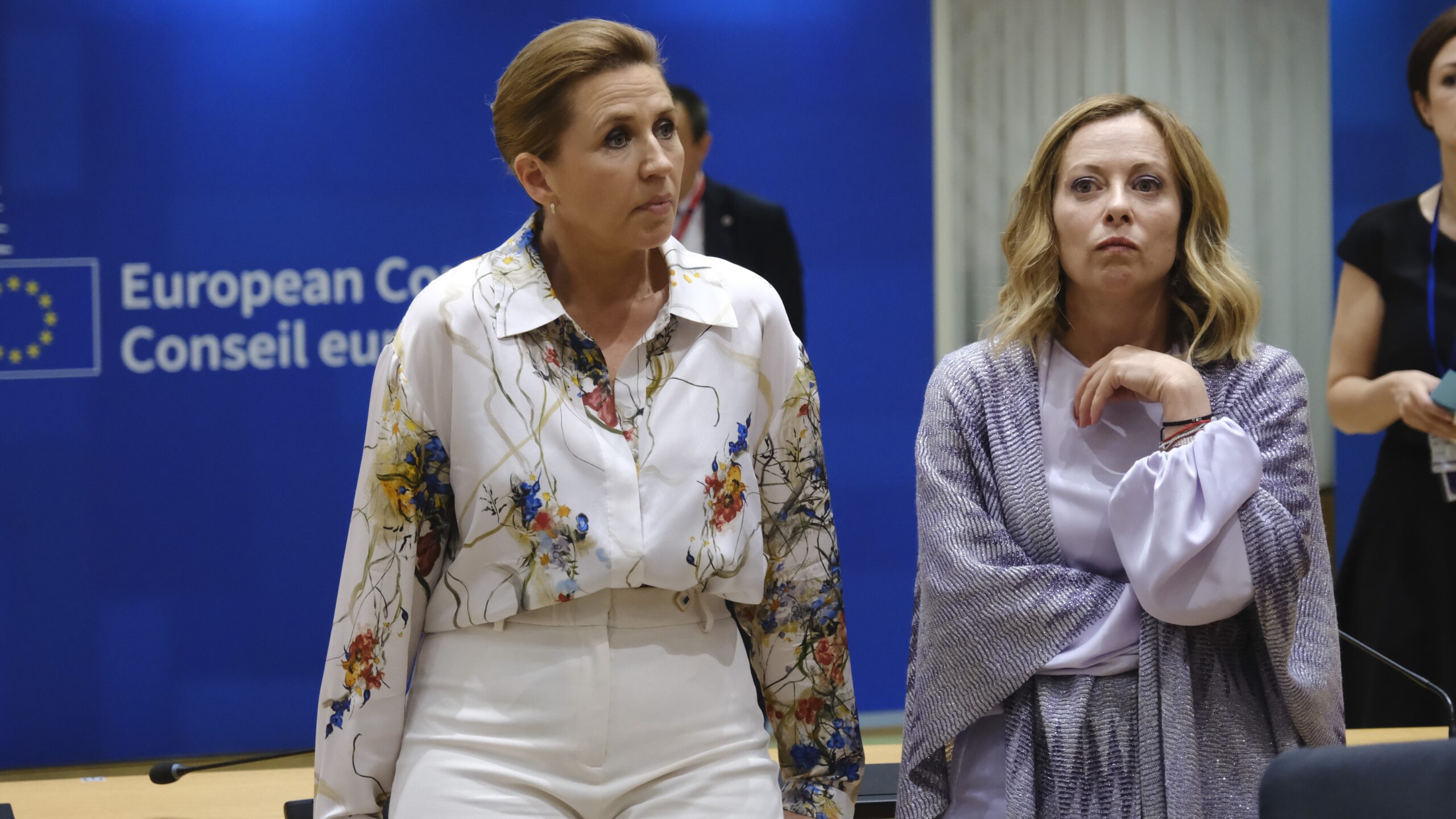In a bold move that could reshape the landscape of European asylum policy, Denmark and Italy are spearheading an initiative to challenge the European Court of Human Rights (ECtHR) over its interpretation of asylum laws. A draft letter, soon to be sent to the Strasbourg-based court, argues that the ECtHR has overstepped its mandate, stretching the European Convention on Human Rights (ECHR) beyond its original intent. This, they claim, undermines the sovereignty of the 46 member states and hampers their ability to manage borders and irregular migration effectively. The letter, still open for other countries to sign, signals a growing discontent with the court’s rulings and a desire to recalibrate the balance between human rights obligations and national autonomy.
This article delves into the motivations behind this initiative, explores the broader implications for European migration policy, and examines the historical and legal context of the ECtHR’s role in asylum cases. It also uncovers hidden tensions, emerging research, and the political dynamics driving this push for reform, offering a comprehensive analysis of a pivotal moment in Europe’s approach to migration.
The Catalyst: A Letter to the ECtHR
The draft letter, as reported by Euractiv, articulates a clear grievance: the ECtHR’s expansive interpretation of the ECHR has created legal constraints that limit member states’ ability to enact policies reflective of their democratic mandates. The letter emphasizes that the court’s rulings on asylum seekers—ranging from family reunification to border pushbacks—have gone beyond what the ECHR’s framers intended. It argues that these decisions fail to account for the “challenges of modern irregular migration,” a phrase that encapsulates the complex pressures European nations face amid rising migration flows.
“What was once right might not be the answer of tomorrow,” the letter poignantly states, signaling a call for a dynamic reinterpretation of the ECHR to align with contemporary realities.
The initiative is not merely a critique but a strategic effort to rally support. Denmark and Italy are actively seeking co-signatories, with countries like Czechia, Finland, Poland, and the Netherlands already showing interest. These nations have been vocal advocates for asylum reforms at the European Union (EU) level, including controversial proposals like offshore migrant reception centers modeled on Italy’s Albania protocol. The letter’s release, expected in the coming weeks, could mark a turning point in how Europe balances human rights with border control.
Why Denmark and Italy?
Denmark and Italy’s leadership in this initiative is no coincidence. Both countries have faced significant ECtHR rulings that challenged their asylum policies, fueling frustration with the court’s perceived overreach.
In Denmark’s case, the ECtHR struck down a policy requiring asylum seekers to wait three years before applying for family reunification. The court argued that this delay violated Article 8 of the ECHR, which guarantees the right to respect for private and family life. Danish authorities, however, viewed the policy as a necessary measure to manage integration and deter speculative asylum claims. The ruling was seen as an encroachment on Denmark’s ability to tailor its immigration system to national priorities.
Italy, meanwhile, has faced repeated ECtHR scrutiny for its handling of migrants in the Mediterranean. The court has ruled against Italy for practices such as returning migrants to Libya, where they face risks of torture or inhumane treatment, and for alleged mistreatment during rescue operations. These rulings have clashed with Italy’s efforts to curb irregular migration across one of Europe’s most active migration routes. The Albania protocol, which involves processing asylum claims in offshore centers, reflects Italy’s attempt to innovate within the constraints imposed by international law—constraints that the letter seeks to loosen.
The Broader Context: Migration and Sovereignty in Europe
The Denmark-Italy initiative is part of a larger wave of discontent with Europe’s migration framework. Across the continent, governments are grappling with rising public concern over irregular migration, strained public services, and the political ascendancy of anti-immigration parties. This section explores the historical, political, and social factors driving the push to challenge the ECtHR.
A Historical Perspective on the ECHR and Asylum
The ECHR, drafted in 1950 under the auspices of the Council of Europe, was designed to safeguard fundamental rights in the aftermath of World War II. Its primary focus was to prevent state abuses like those seen under authoritarian regimes, with provisions protecting life, liberty, and fair trials. Asylum and migration, however, were not central to the convention’s original scope, as large-scale irregular migration was not a significant issue at the time.
Over the decades, the ECtHR has expanded its jurisprudence to address modern challenges, including asylum. Landmark cases, such as Hirsi Jamaa and Others v. Italy (2012), established that returning migrants to unsafe countries violates the principle of non-refoulement, enshrined in Article 3 of the ECHR (prohibition of torture and inhuman treatment). Similarly, rulings on family reunification and detention conditions have extended the ECHR’s reach into migration policy, often to the chagrin of member states.
Critics argue that this judicial activism has transformed the ECtHR into a de facto policymaker, imposing uniform standards that fail to account for diverse national contexts. Supporters, however, contend that the court’s evolving interpretation is necessary to uphold universal human rights in an era of complex global migration.
Political Dynamics: A Shifting Consensus
The letter’s call for reform resonates with a growing political consensus in Europe. The European People’s Party (EPP), the largest political group in the EU’s institutions, has recently advocated for tougher asylum rules, including policies that mirror those previously sanctioned against Hungary by both the ECtHR and the EU Court of Justice. This shift reflects broader trends: countries like Germany, Poland, and Sweden are planning to tighten asylum laws, expedite deportations, and, in some cases, normalize pushbacks—practices the ECtHR has deemed illegal.
Public opinion is also a driving force. A 2024 Eurobarometer survey found that 71% of Europeans view immigration as a top concern, with many favoring stricter border controls. In countries like Denmark and Italy, where social cohesion and welfare systems are under strain, governments face pressure to demonstrate control over migration. The letter to the ECtHR can be seen as a response to these domestic imperatives, cloaked in the language of sovereignty and democratic legitimacy.
Hidden Truths: The Real Stakes of the Initiative
Beneath the surface of the Denmark-Italy letter lies a web of strategic calculations, legal ambiguities, and ethical dilemmas. This section uncovers the less obvious dimensions of the initiative, drawing on research and expert analysis to illuminate its implications.
Strategic Calculations: Building a Coalition
The decision to circulate the letter for co-signatories is a calculated move to build a broad coalition. By including countries like Germany, France, and Hungary—nations with diverse political systems but shared frustrations with the ECtHR—the initiative seeks to present a united front. This coalition could exert significant pressure on the court, especially if it includes major players like Germany, which has faced ECtHR rulings on issues like migrant detention conditions.
Research from the Migration Policy Institute (MPI) suggests that coalition-building is critical in reforming international institutions. The MPI’s 2023 report on European migration governance notes that “fragmented national approaches often fail to influence supranational bodies like the ECtHR, whereas coordinated efforts can shift legal and political norms.” Denmark and Italy’s outreach to potential allies reflects this logic, aiming to create a critical mass that the court cannot ignore.
Legal Ambiguities: Reinterpreting the ECHR
The letter’s call to reinterpret the ECHR raises complex legal questions. The ECHR is a living instrument, meaning its interpretation can evolve to reflect societal changes. However, any push to narrow its application to asylum cases would require consensus among member states or a significant shift in the court’s jurisprudence—both challenging prospects.
Legal scholars like Cathryn Costello, professor of refugee and migration law at the University of Oxford, argue that the ECtHR’s asylum rulings are grounded in core human rights principles, such as non-refoulement and the right to family life. In a 2024 paper, Costello warns that “reinterpreting the ECHR to prioritize state sovereignty risks eroding the universality of human rights, creating a hierarchy where migrants are afforded lesser protections.” Conversely, scholars like Martijn van den Brink, writing in the European Law Review, contend that the ECtHR’s expansive approach sometimes disregards the practical constraints faced by states, particularly those on Europe’s external borders.
The letter’s proponents face a delicate balancing act: they must argue for reinterpretation without undermining the ECHR’s legitimacy or triggering backlash from human rights advocates.
Ethical Dilemmas: Human Rights vs. Border Control
At its core, the initiative raises profound ethical questions about the trade-offs between human rights and border control. Pushbacks, for example, are a flashpoint. The ECtHR has consistently ruled that returning migrants without assessing their asylum claims violates the ECHR. Yet, countries like Poland and Greece argue that pushbacks are necessary to deter illegal crossings and prevent border chaos.
A 2025 report by Human Rights Watch highlights the human cost of pushbacks, documenting cases of violence and family separations at Europe’s borders. The report argues that “normalizing pushbacks risks normalizing state-sponsored cruelty, undermining Europe’s moral credibility.” On the other hand, governments point to the strain on public resources and the rise of smuggling networks as justification for tougher measures.
The Denmark-Italy letter sidesteps these dilemmas, framing the issue as one of sovereignty rather than ethics. However, the debate it sparks will inevitably force Europe to confront the moral implications of its migration policies.
Potential Outcomes and Implications
The initiative’s success hinges on several factors: the number of co-signatories, the ECtHR’s response, and the broader political climate. This section explores possible scenarios and their implications for Europe’s migration framework.
Scenario 1: A Reformed ECtHR
If Denmark and Italy secure broad support, the ECtHR may face pressure to revisit its asylum jurisprudence. This could lead to a more flexible interpretation of the ECHR, granting states greater leeway in areas like pushbacks and family reunification. Such a shift would align with the EU’s ongoing asylum reforms, including the New Pact on Migration and Asylum, which emphasizes external processing and faster deportations.
However, a reformed ECtHR could face accusations of capitulating to political pressure, undermining its independence. This scenario also risks creating a two-tier human rights system, where migrants receive fewer protections than other groups.
Scenario 2: Stalemate and Fragmentation
If the initiative fails to gain traction, the status quo may persist, with the ECtHR continuing to rule against state practices like pushbacks. This could lead to increased defiance from member states, as seen in Hungary’s refusal to comply with ECtHR rulings. Over time, such defiance could erode the court’s authority and fragment Europe’s human rights framework.
A 2024 study by the European Council on Foreign Relations warns that “persistent non-compliance with ECtHR rulings risks a domino effect, where states selectively adhere to international law, weakening the Council of Europe’s cohesion.” Fragmentation could also exacerbate tensions within the EU, as member states pursue divergent migration policies.
Scenario 3: A Compromise Approach
A middle ground could emerge, where the ECtHR acknowledges state concerns without fundamentally altering its jurisprudence. For example, the court could issue guidelines clarifying the conditions under which pushbacks or expedited deportations are permissible, balancing state interests with human rights obligations. This approach would require dialogue between the court and member states, possibly facilitated by the Council of Europe’s Committee of Ministers.
Such a compromise could stabilize Europe’s migration framework but would likely satisfy neither hardline reformers nor human rights purists.
Conclusion: A Defining Moment for Europe
The Denmark-Italy initiative to challenge the ECtHR marks a critical juncture in Europe’s approach to migration and human rights. By questioning the court’s interpretation of the ECHR, the letter reflects deeper tensions between sovereignty and supranational authority, between security and compassion. Its outcome will shape not only asylum policy but also the broader trajectory of European integration and human rights governance.
As the letter garners support and sparks debate, it underscores a fundamental truth: migration is not merely a policy challenge but a test of Europe’s values. Whether the initiative leads to reform, stalemate, or compromise, it will force the continent to confront the complexities of governing in an era of unprecedented mobility. For now, the eyes of Europe—and the world—are on Strasbourg, waiting to see how this bold challenge unfolds.






























0 Comments